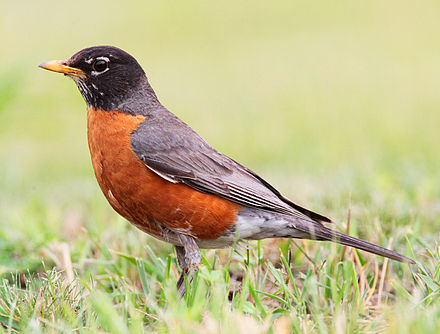Excerpt: “Birds of Prey” and “Water Birds”
Listen to the entire piece here.
Instrumentation: Amplified cello and electronic playback
Duration: 14:00
Commission: Cellist Madeleine Shapiro
Premiere: 11/3/05
Madeleine Shapiro, TechnoSonics VI: Ecology and E-Music
University of Virginia, Charlottesville, VA
Additional Recording: Iracema de Andrade
Voces Electroacústicas
Program Note:
For the Birds, commissioned by cellist Madeleine Shapiro, is an hommage to birds, represented here by birds of the Yellowstone region. Many are in steep decline due to habitat loss and climate change. Rather than imitating their sounds, I include them, sometimes highlighting their calls, sometimes processing the field recordings to comment on their situation. The joining of the voice of the cello with that of the birds reminds us of the joining of the human world with that of the other animals we live among.
The focus on the birds of Yellowstone reflects Madeleine’s love of the region and my own fascination with, and concern for, these birds. Naturalist Kevin Colver kindly shared some of his excellent recordings as source material. Each movement features a particular bird type and cello techniques that respond to them. The overall shape moves from the beckoning of songbirds, to the insistent pecking of the sapsuckers, to the ominous calls of the predators, to the voices and wing sounds of water birds as they rise in flight.
Each of the four movements celebrates different bird groups:
1. Songbirds
2. Sapsuckers
3. Birds of Prey
4. Water Birds
Press:
“For the Birds” by Judith Shatin is a real highlight for me, maybe because of my old love for Rautavaara and Sibelius, who also liked to use nature pictures. Shatin goes farther in her arrangements and points out the ecological situation of the cello part on the one hand and on the other hand positions man as one among other animals. Each of the four movements is dedicated to a category of birds, and the instrumental techniques used correspond to the characteristics of the animals. Sophie-Justine Herr is fully in the flow of the game here, passionately but also thoughtfully entering into dialogue with the bird calls. For the many synchronously executed sound events, a lot of planning and focusing on details is necessary. And yet, for the cellist, all this is only a means to the end of the overarching music-making activity, the joy of the musical event.” –Stefan Pillhofer, 2024/05/22, orchestergraben.com

